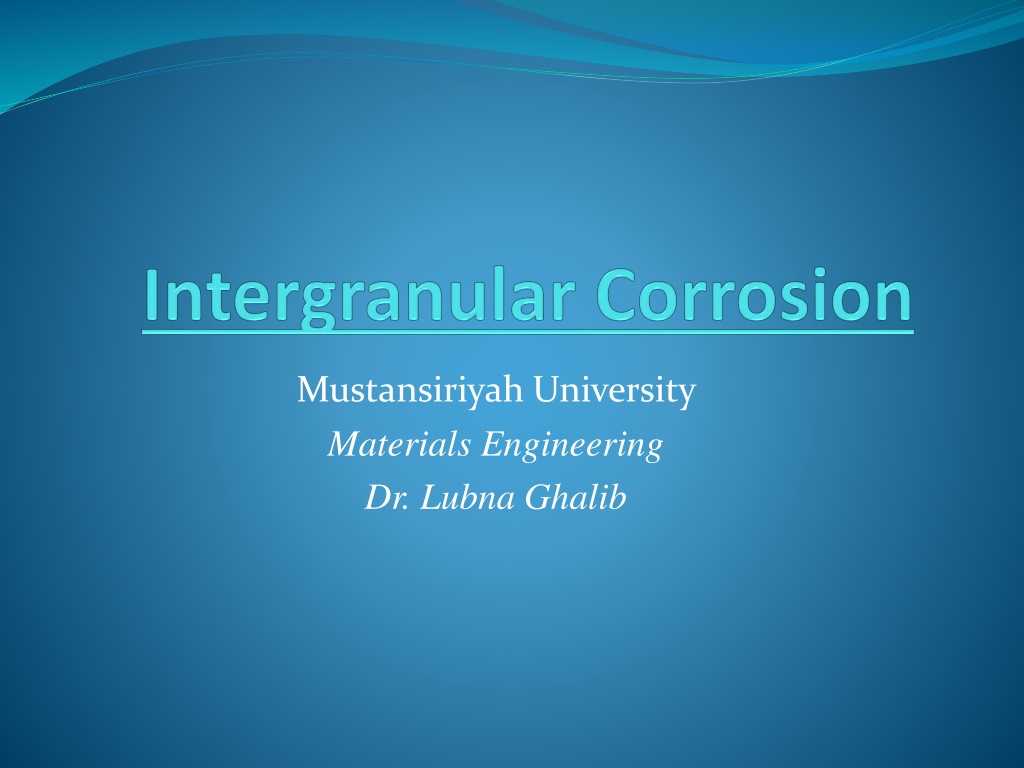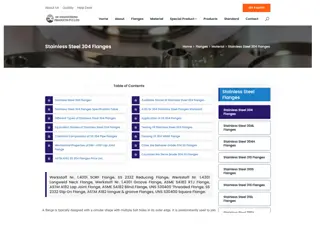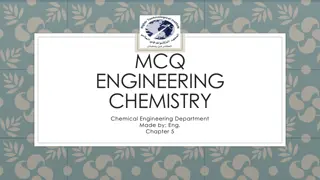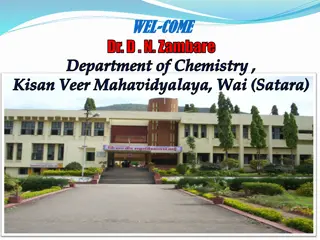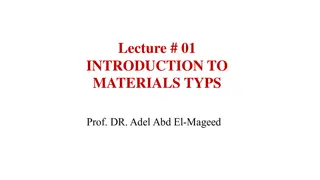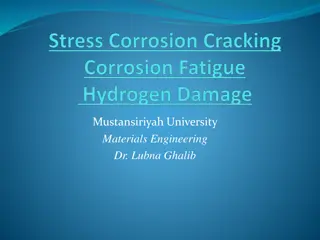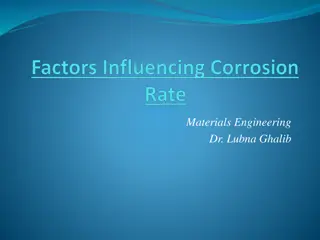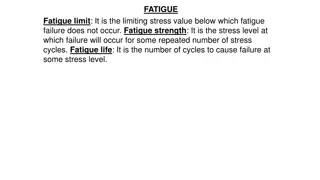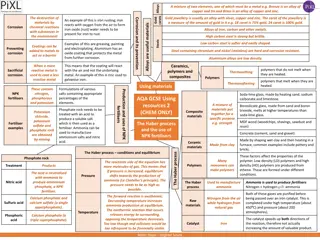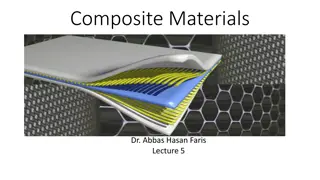Understanding Intergranular Corrosion and Sensitization in Materials Engineering
Intergranular corrosion (IGC) is a type of corrosion that targets the boundaries of crystallites in materials, making them more vulnerable to corrosion. This phenomenon, caused by impurities, enrichment, or depletion of alloying elements at grain boundaries, can lead to material degradation. Sensitization, a related process, results in alloy vulnerability to intergranular attack due to chromium depletion near carbide precipitates. Preventative measures include reducing carbon content, adding stabilizers, and controlling exposure to critical temperatures. Non-sensitized stainless steels exhibit resilience against intergranular corrosion in various environments.
Download Presentation

Please find below an Image/Link to download the presentation.
The content on the website is provided AS IS for your information and personal use only. It may not be sold, licensed, or shared on other websites without obtaining consent from the author. Download presentation by click this link. If you encounter any issues during the download, it is possible that the publisher has removed the file from their server.
E N D
Presentation Transcript
Mustansiriyah University Materials Engineering Dr. Lubna Ghalib
Intergranular Corrosion: Intergranular corrosion (IGC), also known as intergranular attack (IGA), is a form of corrosion where the boundaries of crystallites of the material are more susceptible to corrosion than their insides. This situation can happen in otherwise corrosion-resistant alloys, when the grain boundaries are depleted, known as grain boundary depletion, of the corrosion-inhibiting elements such as chromium by some mechanism. Examples Intergranular corrosion can occur in many alloys systems such as stainless steel, nickel base and aluminum base alloys.
Intergranular Corrosion: Causes of Intergranular Corrosion: Intergranular corrosion of an alloy may be caused by Impurities at the grain boundaries Enrichment of one of the alloying elements Depletion of one of the elements that affects its corrosion resistance in grain boundary areas. The potential difference between the grain boundary regions and any precipitate, intermetallic phases, or impurities that form at the grain boundaries is responsible for higher dissolution rates at these regions.
Intergranular Corrosion: Mechanism: The actual mechanism differs from one alloy system to another. Grain boundary precipitation, notably chromium carbides in stainless steels, is a well-recognized and accepted mechanism of intergranular corrosion. This type of corrosion is a particular problem in stainless steels; however it can also occur in other metals. In stainless steels the problem occurs after the metal is heated to between 425 C and 870 C. During the heating, the chromium in the stainless steel reacts with carbon in the steel and forms particles of chromium carbide at the grain boundaries. The regions near the grain boundaries become depleted in chromium. This means that the regions around the grain boundaries are no longer protected by the chromium passivation, and therefore corrode intergranularly.
Intergranular Corrosion: Sensitization is the loss of alloy integrity. It results from chromium depletion in the vicinity of carbides precipitated at grain boundaries. This causes the steel or alloy to become susceptible to intergranular corrosion. Sensitization requires specific combinations of: Temperature Time Composition Sensitization can occur during welding or annealing after cold working. Sensitization can be prevented by: Reducing the carbon content Adding stabilizers such as niobium or titanium Reducing the time of exposure to the critical temperature range Non-sensitized austenitic stainless steels are resistant to intergranular attack in almost all environments.
Intergranular Corrosion: Types of Intergranular Corrosion There are two types of Intergranular corrosion: Knife line attack (KLA) Weld Decay
Intergranular Corrosion: Knife Line Attack: is a form of intergranular corrosion of an alloy, usually stabilized stainless steel, along a line adjoining or in contact with a weld after heating into the sensitization temperature range. In stabilized alloys and steels KLA is caused when the carbon comes in contact with stabilizers such as niobium and titanium. In such, there will be no weld corrosion in the zones affected by heat during the welding process. However, when chromium carbide precipitates during subsequent welding or heat treatment, there is a possibility that the narrow band close to the fusion line undergoes a knifeline attack. A good example of a knifeline attack is one involving steels that are stabilized by niobium, like stainless steel 347. Prevention of Knife line attack Heat treatment - heating the weld to 1065oC to re-stabilize the material.
Intergranular Corrosion: Weld Decay: Weld decay is a corrosion process that mainly occurs as a result of sensitization (regions susceptible to corrosion) in the heat affected Zones (HAZ) of metal during welding operations. This process mostly occurs in stainless steels or certain nickel-based alloys. It is a form of intergranular corrosion. Prevention of Weld Decay Using low carbon grade stainless steels alloyed with stabilized grades of titanium or niobium, which are strong carbide formers. They react with the carbon to form the corresponding carbides, thereby preventing chromium depletion. Use low carbon content grade stainless steel, e.g: 316L, 304L ~ 0.03 wt.%, so carbide formation is minimal. Heat treatment to re dissolve the carbides (post welding heat treatment) Weak corrosive conditions do not cause IGC Low acidity (high pH) will generally reduce the susceptibility to IGC
